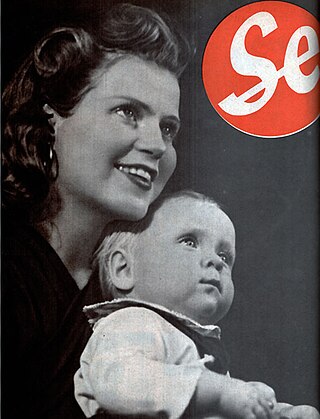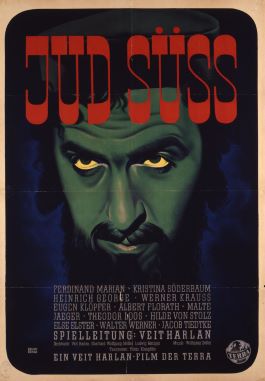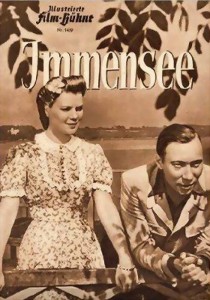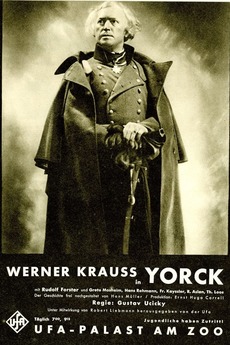
Kołobrzeg is a port city in the West Pomeranian Voivodeship in north-western Poland with about 47,000 inhabitants. Kołobrzeg is located on the Parsęta River on the south coast of the Baltic Sea. It is the capital of Kołobrzeg County.

August Wilhelm Antonius Graf Neidhardt von Gneisenau was a Prussian field marshal. He was a prominent figure in the reform of the Prussian military and the War of Liberation.

Ferdinand Baptista von Schill was a Prussian major who revolted unsuccessfully against French domination of Prussia in May 1809.

Veit Harlan was a German film director and actor. Harlan reached the highpoint of his career as a director in the Nazi era; most notably his antisemitic film Jud Süß (1940) makes him controversial. While viewed critically for his ideologies, a number of critics consider him a capable director on the grounds of such work as his Opfergang (1944).

Beata Margareta Kristina Söderbaum was a Swedish-born German film actress, producer, and photographer. She performed in Nazi-era films made by a German state-controlled production company.

Agfacolor was the name of a series of color film products made by Agfa of Germany. The first Agfacolor, introduced in 1932, was a film-based version of their Agfa-Farbenplatte, a "screen plate" product similar to the French Autochrome. In late 1936, Agfa introduced Agfacolor Neu, a pioneering color film of the general type still in use today. The new Agfacolor was originally a reversal film used for making "slides", home movies and short documentaries. By 1939, it had also been adapted into a negative film and a print film for use by the German motion picture industry. After World War II, the Agfacolor brand was applied to several varieties of color negative film for still photography, in which the negatives were used to make color prints on paper. The reversal film was then marketed as Agfachrome. These films use Color Developing Agent 1 in their color developer.

The Great King is a 1942 German drama film directed by Veit Harlan and starring Otto Gebühr. It depicts the life of Frederick the Great, who ruled Prussia from 1740 to 1786. It received the rare "Film of the Nation" distinction. It was part of a popular cycle of "Prussian films".
The Immortal Heart is a 1939 German drama film directed by Veit Harlan and starring Heinrich George. It was based on Walter Harlan's play The Nuremberg Egg and depicts the inventor of the watch, Peter Henlein.

The siege of Kolberg took place from March to 2 July 1807 during the War of the Fourth Coalition, part of the Napoleonic Wars. An army of the First French Empire and several foreign auxiliaries of France besieged the fortified town of Kolberg, the only remaining Prussian-held fortress in the Province of Pomerania. The siege was not successful and was lifted upon the announcement of the Peace of Tilsit.

Jud Süß is a 1940 Nazi German historical drama and propaganda film produced by Terra Film at the behest of Joseph Goebbels. It is considered one of the most antisemitic films of all time. The film was directed by Veit Harlan, who wrote the screenplay with Eberhard Wolfgang Möller and Ludwig Metzger. The leading roles were played by Ferdinand Marian and Harlan's wife Kristina Söderbaum; Werner Krauss and Heinrich George played key supporting roles.

Ohm Krüger is a 1941 German biographical film directed by Hans Steinhoff and starring Emil Jannings, Lucie Höflich, and Werner Hinz. It was one of a series of major propaganda films produced in Nazi Germany attacking the United Kingdom. The film depicts the life of the South African politician Paul Kruger and his eventual defeat by the British during the Boer War.

The Ruler is a 1937 German drama film directed by Veit Harlan. It was adapted from the play of the same name by Gerhart Hauptmann. Erwin Leiser calls it a propagandistic demonstration of the Führerprinzip of Nazi Germany. The film's sets were designed by the art director Robert Herlth. Location shooting took place around Oberhausen and Pompeii near Naples. It premiered at the Ufa-Palast am Zoo in Berlin.
Die goldene Stadt, is a 1942 German color film directed by Veit Harlan, starring Kristina Söderbaum, who won the Volpi Cup for Best Actress.
Opfergang is a 1944 German film directed by Veit Harlan. It is based on Rudolf G. Binding's work of the same title, with alterations for propaganda purposes.

Immensee: ein deutsches Volkslied is a German film melodrama of the Nazi era, directed in 1943 by Veit Harlan and loosely based on the popular novella Immensee (1849) by Theodor Storm. It was a commercial success and, with its theme of a woman remaining faithful to her husband, was important in raising the morale of German forces; it remained popular after World War II.

The Journey to Tilsit is a 1939 German drama film directed by Veit Harlan and starring Kristina Söderbaum, Philip Dorn and Anna Dammann.

Yorck is a 1931 German war film directed by Gustav Ucicky and starring Werner Krauss, Grete Mosheim and Rudolf Forster. It portrays the life of the Prussian General Ludwig Yorck von Wartenburg, particularly his refusal to serve in Napoleon's army during the French Invasion of Russia in 1812. It was a Prussian film, one of a cycle of films made during the era that focused on Prussian history.

Horst Joachim Arthur Caspar was a German actor, prominent in German theatre and film in the 1930s and 1940s. His postwar career was cut short by his sudden death at 39.

Eyes of Love is a 1951 West German drama film directed by Alfred Braun and starring Käthe Gold, René Deltgen and Paul Wegener.

The fall of Berlin took place on 24 October 1806 when the Prussian capital of Berlin was captured by French forces in the aftermath of the Battle of Jena–Auerstedt. Berlin fell 15 days after the beginning of the war. The French Emperor Napoleon entered the city after three days, from which he issued his Berlin Decree implementing his Continental System. Large-scale plundering of Berlin took place.

















